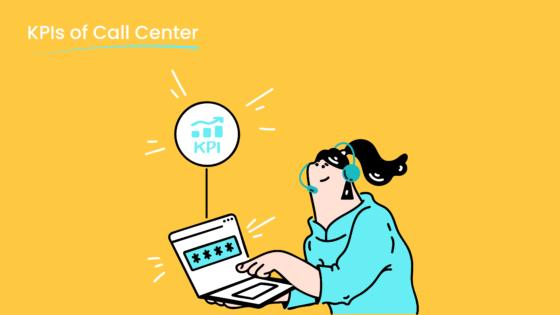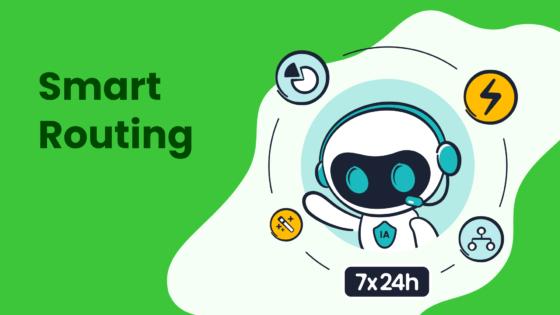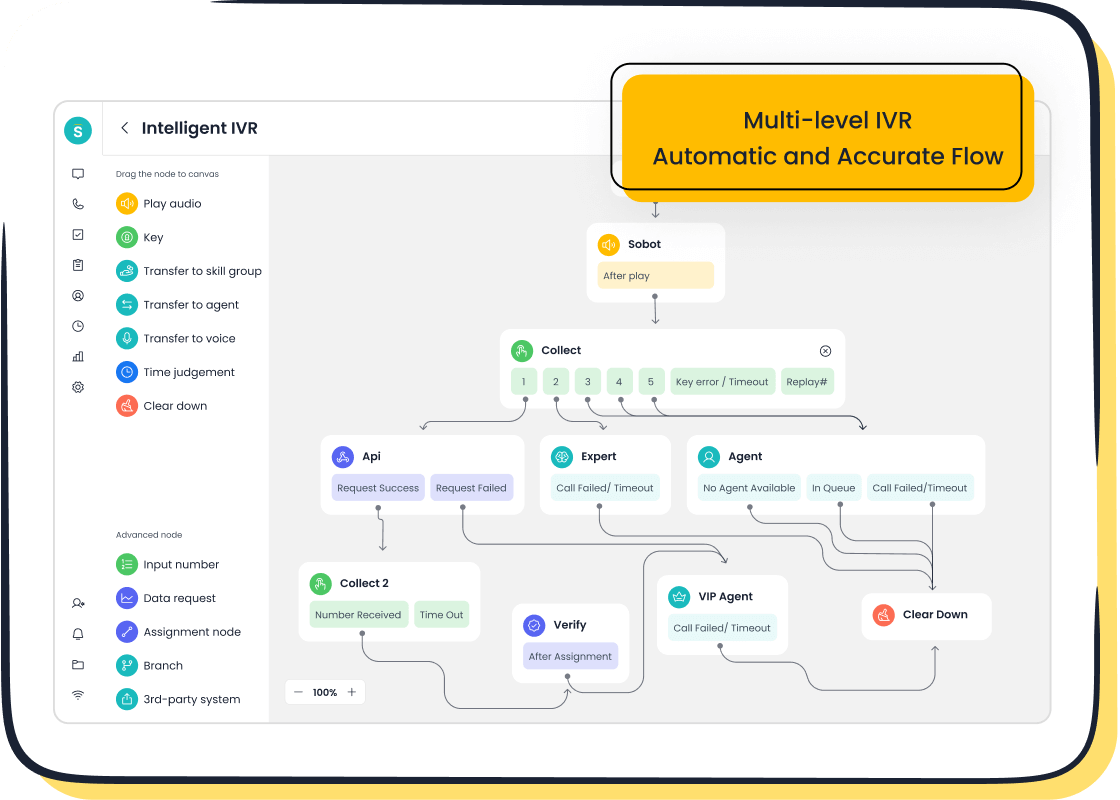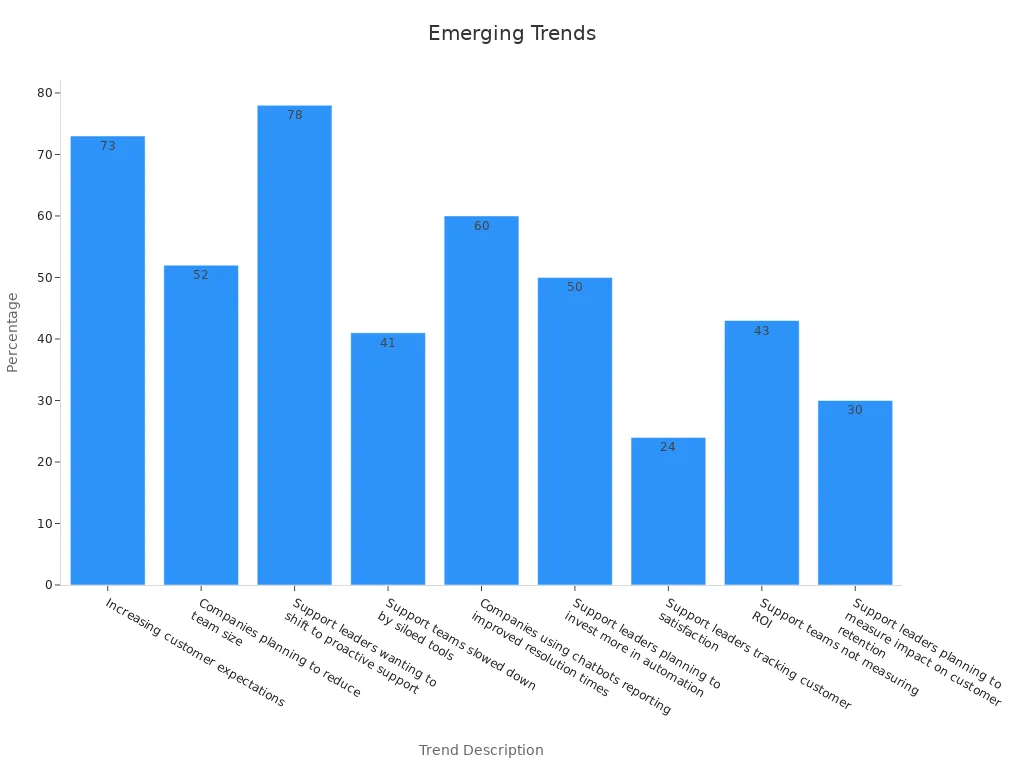Boosting Customer Satisfaction with Effective Metrics Analysis

Customer service metrics play a vital role in enhancing customer satisfaction by providing measurable insights into service performance. For example, 90% of customers agree that excellent customer support influences their loyalty to a brand. Metrics for customer service help you identify areas needing improvement, such as response time or resolution rates, ensuring a seamless experience.
Data-driven insights empower businesses to refine their strategies. By analyzing customer preferences, you can tailor services and reduce complaints. Sobot, with its advanced solutions like omnichannel platforms, enables you to track these metrics efficiently, ensuring high satisfaction levels and lasting loyalty.
Understanding Metrics for Customer Service
Defining Customer Service Metrics
Customer service metrics are measurable indicators that evaluate the performance and quality of customer interactions. These metrics help you understand how well your team meets customer expectations. For example, Net Promoter Score (NPS) measures customer loyalty, while Customer Satisfaction Score (CSAT) gauges immediate satisfaction. Metrics like these provide actionable insights to improve service delivery.

Sobot’s solutions, such as its Voice/Call Center, simplify tracking these metrics. Features like real-time monitoring and data analytics allow you to measure key performance indicators (KPIs) effectively. By leveraging these tools, you can identify trends and make informed decisions to enhance customer satisfaction.
The Role of Metrics in Evaluating Customer Experience
Customer experience metrics play a critical role in assessing the quality of interactions. They reveal gaps in service and highlight areas for improvement. For instance, a hotel chain used Customer Effort Score (CES) to identify service bottlenecks, leading to better guest experiences. Metrics like these align with business strategies, transforming into KPIs that drive continuous improvement.
Sobot’s omnichannel solution supports this by consolidating data from multiple platforms. This unified approach ensures you can track metrics across channels, providing a comprehensive view of the customer journey. With tools like AI-powered analytics, you can predict customer behavior and tailor services to meet their needs.
Common Standards for Measuring Metrics
Industry standards provide benchmarks for evaluating customer service metrics. For example, a world-class First Call Resolution (FCR) rate exceeds 80%, while a top-tier CSAT score is 85% or higher. These benchmarks help you set realistic goals and measure success.
| Metric | Industry Standard Benchmark | World-Class Benchmark |
|---|---|---|
| First Call Resolution (FCR) | 70% - 79% | 80% or higher |
| Customer Satisfaction Score (CSAT) | 75% - 84% | 85% or higher |

Sobot’s Voice/Call Center enables you to achieve these benchmarks with features like smart call routing and AI-powered voicebots. These tools improve efficiency and ensure high-quality interactions, helping you meet or exceed industry standards.
Benefits of Analyzing Customer Service Metrics
Identifying Improvement Opportunities
Analyzing customer service metrics helps you uncover areas that need enhancement. For example, tracking the issue resolution rate can reveal bottlenecks in your processes. When you identify these gaps, you can implement targeted strategies to improve customer satisfaction. Metrics like Customer Satisfaction Score (CSAT) and Net Promoter Score (NPS) allow you to celebrate successful practices while focusing on areas needing attention.
Consider the case of a global retailer that used continuous training initiatives to boost employee growth. By incorporating digital tools for learning, they transformed their customer support experience and achieved sustained business growth. Sobot’s Voice/Call Center supports this process by offering real-time monitoring and analytics. These features enable you to pinpoint inefficiencies and optimize your customer service performance effectively.
Enhancing Customer Retention and Loyalty
Effective metrics analysis strengthens customer retention and loyalty. Metrics such as the customer retention rate and churn rate provide insights into how well your business retains satisfied customers. For instance, predictive analytics can help you forecast customer behaviors and identify those at risk of leaving. By targeting these customers with personalized promotions, you can re-engage them and improve loyalty.
Sobot’s omnichannel solution consolidates customer data across platforms, giving you a complete view of the customer journey. This unified approach allows you to tailor experiences and reduce churn. For example, Samsung achieved a 97% customer satisfaction rate by using Sobot’s solutions to unify communication channels and provide customized service.
| Metric | Description |
|---|---|
| Customer Churn Rate | Measures the percentage of customers a business loses over a specific period. |
| Customer Lifetime Value (CLV) | Calculates the total revenue expected from a single customer account throughout their relationship. |
| Customer Satisfaction Score | A straightforward indicator of customer satisfaction, typically measured through surveys. |
| Net Promoter Score (NPS) | Measures customer loyalty by asking how likely customers are to recommend the company to others. |
Driving Data-Driven Insights for Better Decisions
Data-driven insights empower you to make informed decisions that improve customer service performance. Highly data-driven organizations are three times more likely to report significant improvements in decision-making compared to those that rely less on data. Metrics for customer service, such as CSAT and NPS, provide actionable feedback that guides your strategies.

Sobot’s AI-powered analytics enhance this process by predicting customer behavior and identifying trends. For example, targeting customers who haven’t interacted with your brand recently can help you re-engage them. With tools like Sobot’s Voice/Call Center, you can track KPIs like average response time and issue resolution rate, ensuring your decisions are backed by reliable data.
Tip: Regularly reviewing metrics ensures your strategies remain aligned with customer expectations, driving long-term satisfaction and loyalty.
Key Customer Service Metrics to Track

Performance Metrics (e.g., First Call Resolution, Average Response Time)
Performance metrics are essential for evaluating customer service efficiency and ensuring high-quality interactions. These metrics measure how effectively your team resolves customer issues and handles inquiries. For instance, First Call Resolution (FCR) tracks the percentage of issues resolved during the first interaction. A high FCR rate indicates streamlined processes and satisfied customers. Average Response Time, another critical metric, assesses how quickly your team responds to customer inquiries. Faster response times often lead to better customer satisfaction scores.
| Metric | Description | Industry Average/Benchmark |
|---|---|---|
| Average Transaction Value | Total retail sales revenue divided by the number of transactions. | $56.44 per transaction (varies by vertical) |
| Profit Per Transaction | Gross margin dollars divided by the number of transactions. | Varies based on store and product performance |
| Customer Lifetime Value | Total revenue expected from a customer throughout their relationship. | Varies; benchmarking against competitors needed |
| Net Promoter Score | Measures customer loyalty based on likelihood to recommend. | Varies; benchmarking against industry peers needed |
Sobot’s Voice/Call Center enhances tracking of these key performance metrics. Features like smart call routing and real-time monitoring ensure your team meets industry benchmarks. For example, its AI-powered voicebot can reduce average response times by automating routine inquiries, allowing agents to focus on complex issues.
Tip: Regularly monitor performance metrics to identify bottlenecks and improve customer service efficiency.
Satisfaction Metrics (e.g., CSAT, NPS, CES)
Satisfaction metrics measure how well your team meets customer expectations. These metrics provide insights into the quality of customer experience and highlight areas for improvement. Customer Satisfaction Score (CSAT) evaluates immediate satisfaction levels, often through post-interaction surveys. Net Promoter Score (NPS) gauges customer loyalty by asking how likely customers are to recommend your brand. Customer Effort Score (CES) assesses how easy it is for customers to resolve issues, helping you identify friction points in your processes.
- CSAT: A straightforward indicator of customer satisfaction, though subjective and a lagging metric.
- NPS: Offers insights into loyalty by categorizing customers as promoters, passives, or detractors.
- CES: Highlights areas where customers face challenges, enabling targeted improvements.
Sobot’s omnichannel solution simplifies tracking these metrics by consolidating data from multiple platforms. For example, Samsung achieved a 97% customer satisfaction rate by leveraging Sobot’s tools to unify communication channels and provide personalized service. With AI-driven analytics, you can predict customer behavior and tailor experiences to boost satisfaction.
Note: Satisfaction metrics are vital for understanding customer sentiment and driving loyalty.
Risk Metrics (e.g., Churn Rate, Customer Complaints)
Risk metrics help you identify potential threats to customer retention and loyalty. The customer churn rate measures the percentage of customers who stop using your services over a specific period. High churn rates often signal dissatisfaction or misalignment with customer needs. Customer complaints, another critical metric, provide direct feedback on areas requiring improvement. Studies show that 76% of companies report negative feedback as a common indicator of churn risk.
| Methodology/Tool | Description |
|---|---|
| CRM Tools | Centralizes customer information, automates data collection and analysis, and helps track agent performance. |
| Survey Tools | Facilitates the creation and analysis of customer surveys, improving feedback collection and reducing errors. |
| Social Media Monitoring Tools | Automates tracking of brand mentions and sentiment on social media, providing insights into customer opinions. |
Sobot’s Voice/Call Center supports risk metric analysis with features like call tracking and data analytics. These tools help you monitor churn rates and complaints effectively. For example, predictive analytics can identify customers at risk of leaving, enabling you to re-engage them with personalized offers.
Tip: Addressing risk metrics proactively can prevent churn and improve customer satisfaction scores.
Steps to Measure and Analyze Metrics Effectively
Leveraging Sobot’s Voice/Call Center for Data Collection
Effective data collection is the foundation of analyzing customer service metrics. You need tools that streamline this process and ensure accuracy. Sobot’s Voice/Call Center simplifies data collection by offering features like real-time monitoring, call tracking, and AI-powered analytics. These capabilities allow you to gather key performance indicators (KPIs) such as First Call Resolution (FCR) and Average Handle Time (AHT) effortlessly.

For example, the platform’s intelligent IVR system routes calls efficiently, reducing wait times and improving customer satisfaction. Its unified workspace consolidates customer data, enabling agents to access detailed histories during interactions. This ensures that you can track metrics for customer service across all channels without missing critical insights.
Tip: Use tools like Sobot’s Voice/Call Center to automate data collection and focus on analyzing trends that drive customer support improvements.
Setting Benchmarks and Goals
Setting benchmarks and goals helps you measure success and identify areas for improvement. Start by collecting your current metrics on KPIs such as Customer Satisfaction Score (CSAT) and Net Promoter Score (NPS). Research industry benchmarks to understand where your business stands. For example, a world-class First Response Time (FRT) for live chat is under five minutes, while a CSAT score above 85% is considered excellent.
| Metric | Benchmark/Standard |
|---|---|
| First Response Time (FRT) | Under 1 hour for email, under 5 minutes for live chat |
| Customer Satisfaction Score (CSAT) | Ranges from 70% to 85% |
| Net Promoter Score (NPS) | Above +30 is good, above +50 is excellent |
| Average Handle Time (AHT) | Typically falls between 6 to 8 minutes |
Perform a gap analysis to identify discrepancies between your metrics and benchmarks. Prioritize KPIs that align with your business goals, such as reducing customer churn or improving resolution rates. Sobot’s AI-powered analytics can assist by providing data-driven insights that highlight areas needing attention.
Objectives for reducing customer churn:
- Reduce wait times for complex issues.
- Automate basic requests via AI-powered chatbots.
Conducting Regular Reviews and Adjustments
Regular reviews of your metrics ensure that your strategies remain effective and aligned with customer expectations. Research shows that continuous measurement and analysis help businesses adapt to changing user needs and market trends. By evaluating your KPIs frequently, you can identify emerging trends and maintain a competitive edge.
Sobot’s Voice/Call Center supports this process with real-time analytics and monitoring tools. For example, tracking metrics like Average Handle Time (AHT) and Customer Effort Score (CES) allows you to pinpoint inefficiencies and make data-driven adjustments. Use these insights to refine workflows, optimize team configurations, and improve customer satisfaction.
Tip: Regularly review your metrics to identify areas for improvement and make data-driven cases for additional resources.
Future Trends in Customer Service Metrics

AI Integration for Predictive Analytics
Artificial intelligence is transforming customer service metrics by enabling predictive analytics. AI processes customer data in real-time, allowing you to anticipate behaviors and preferences. For example, AI-driven tools can forecast customer trends, identify churn risks, and optimize marketing campaigns. This proactive approach ensures you stay ahead of customer needs while reducing friction in their journey.
AI-powered chatbots also play a crucial role. They operate 24/7, collecting valuable data during interactions. This data provides insights into customer behavior, helping you refine your strategies. Sobot’s Voice/Call Center leverages AI to enhance predictive analytics. Its AI-powered voicebot identifies customer intent and automates routine tasks, enabling your team to focus on complex issues. By integrating AI, you can improve your kpis, such as Net Promoter Score (NPS) and Customer Satisfaction Score (CSAT), while delivering seamless omnichannel experiences.
Real-Time Data Collection and Analysis
Real-time analytics is essential for modern customer service. It allows you to access data as it is created, supporting live decision-making and enhancing responsiveness. For instance, customer journey analytics provide immediate insights into interactions, helping you identify areas for improvement. Real-time data also enables tailored surveys, increasing response rates and customer engagement.

Sobot’s Voice/Call Center excels in real-time analytics. Its call tracking and monitoring tools provide instant feedback on kpis like First Call Resolution (FCR) and Average Handle Time (AHT). This ensures you can address inefficiencies promptly. According to industry trends, 60% of companies using chatbots report improved resolution times, highlighting the importance of real-time data in optimizing operations.

Personalization Through Advanced Metrics
Advanced metrics enable you to deliver personalized experiences that boost customer satisfaction. Metrics like Time-to-First-Action and Onboarding Completion Rates reveal how effectively you engage users. For example, shorter Time-to-Value (TTV) indicates successful communication of your product’s benefits. Personalized onboarding also increases free trial conversion rates and reduces churn.
| Metric | Description | Benefit of Personalization |
|---|---|---|
| Time-to-first-action | Measures how long a new user takes to perform their first key action within the app. | Shorter time correlates with long-term adoption, indicating effective personalized onboarding. |
| Free trial conversion rate | Reveals the effectiveness of onboarding in converting trial users to paying customers. | Higher conversion rates indicate successful demonstration of product value through personalized onboarding. |
| Retention rate | Measures the percentage of users who continue using a product over time. | Higher retention rates imply that personalization has fostered a positive user experience. |
Sobot’s omnichannel solution consolidates customer data, enabling you to track these metrics seamlessly. Its unified workspace ensures agents have the insights needed to tailor interactions, improving retention and customer lifetime value. By leveraging advanced metrics, you can create meaningful connections that drive loyalty and long-term success.
Customer service metrics are essential for improving customer satisfaction and driving business success. They provide measurable insights into your team’s performance and help identify areas for improvement. For example, 49% of US consumers switched companies last year due to poor customer service. Tracking kpis like First Call Resolution and Net Promoter Score ensures you meet customer expectations and reduce churn.
Sobot’s Voice/Call Center simplifies metrics analysis with features like real-time monitoring and AI-powered analytics. These tools help you track kpis effectively, enabling data-driven decisions that enhance customer satisfaction. By prioritizing metrics analysis, you can build stronger customer relationships and achieve long-term success.
Tip: Start leveraging tools like Sobot’s Voice/Call Center today to optimize your kpis and elevate your customer service strategy.
FAQ
What are KPIs in customer service, and why are they important?
KPIs, or key performance indicators, measure your team's success in meeting customer service goals. They help you track metrics like First Call Resolution and Customer Satisfaction Score. By analyzing these KPIs, you can identify areas for improvement and ensure your service aligns with customer expectations.
How can Sobot’s Voice/Call Center help track KPIs?
Sobot’s Voice/Call Center simplifies KPI tracking with features like real-time monitoring and AI-powered analytics. For example, it tracks metrics such as Average Handle Time and First Call Resolution. These insights help you optimize workflows, improve efficiency, and enhance customer satisfaction.
How often should you review customer service KPIs?
You should review KPIs regularly, ideally monthly or quarterly. Frequent reviews help you identify trends, address inefficiencies, and adapt to changing customer needs. Tools like Sobot’s Voice/Call Center provide real-time analytics, making it easier to monitor and adjust your strategies.
What are some examples of KPIs for customer service?
Examples of KPIs include Customer Satisfaction Score (CSAT), Net Promoter Score (NPS), and Average Response Time. These metrics provide insights into customer experience and team performance. Sobot’s solutions help you track these KPIs seamlessly, ensuring your service meets industry standards.
Can AI improve KPI performance in customer service?
Yes, AI enhances KPI performance by automating repetitive tasks and providing predictive analytics. For instance, Sobot’s AI-powered voicebot reduces response times and improves First Call Resolution rates. This allows your team to focus on complex issues, boosting overall efficiency and customer satisfaction.
See Also
Enhancing Call Center Effectiveness Through Performance Monitoring
Ten Strategies to Improve Customer Satisfaction in Live Chat
Increasing E-commerce Customer Satisfaction with Chatbot Technology
Improving Efficiency with AI-Driven Customer Service Solutions
Top Practices for Effective Quality Management in Call Centers
